


PIM-SM Example
The PIM Sparse Mode protocol supports both source and shared trees. It assumes that there are no hosts that want the mutlicast traffic unless they specifically ask for it.
It utilises a Redezvous Point (RP) to coordinate forwarding from source to receivers to learn of each others existence. Regardless of the number or location of receivers, senders register with the RP and send a single copy of multicast data through it to registered receivers. Also, regardles of the location or number of sources group members register to receive data and always receive it through the RP.
As such, it is appropiate for wide scaled deployment for both densely and sparsely populated groups and is the optimal choice for all production networks regardless of size and membership density.
Shared Trees Joins
In the diagram below, there is an active receiver attatched to the leaf router at the bottom that has joined the multicast group G.
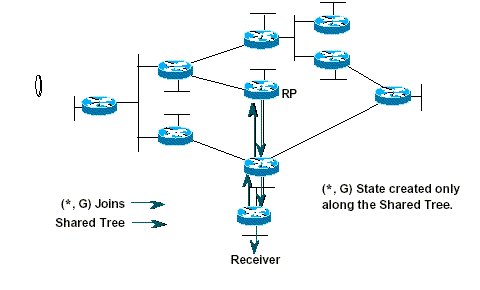
The leaf routers knows the IP address of the RP for group G and sends a (*,G) Join for this group towards the RP. This (*,G) Join travels hop-by-hop to the RP building a branch of the Shared Tree that extends from the RP to the last-hop router directly connected to the receiver. At this point, Group G traffic can flow down the Shared Tree to the receiver.
Sender Registration
As soon as an active source for group G sends a packet, the leaf router that is attatched to this source is responsible for Registering this srouce with the RP and requesting the RP to build a tree back to that router.
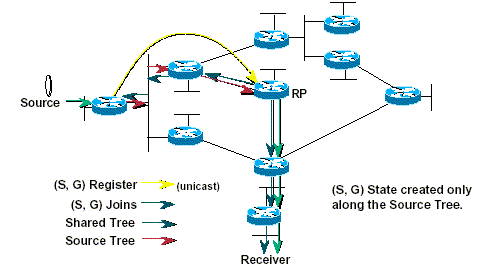
The source router encapsulates the multicast data from the source in a special PIM-SM message called the Register Message and unicasts the data to the RP. When the RP receives the Register message, it does two things,
Encapsulates the mutlicast data packet inside of the Register message and forwards it down the Shared Tree.
The RP also sends an (S,G) Join back to the source network S to create a branch of an (S,G) Shortest Path Tree. This results in (S,G) state being created in all the router along the SPT, including the RP.
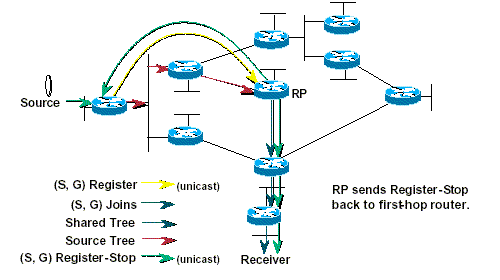
As soon as the SPT is build from teh Source router to the RP, multicast traffic begins to flow natively from the souce S to the RP. Once the RP begins receiving data natively (ie down the SPT) from source S it sends a Register Stop to the source's first hop router to inform it that it can stop sending the unicast Register messages.
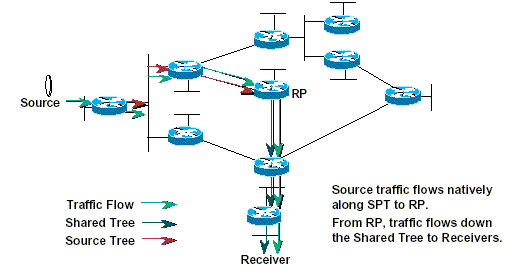
At this point, multicast traffic from the source is flowing down the SPT to the RP and from there, down the Shared Tree to the receiver.
SPT Switchover
PIM-SM has the capability for last hop routers (routers directly connected to members) to switch to the Shortest Path Tree and bypass the RP if the traffic rate is above a set threshold called the SPT-Threshold. Should this value be set to zero, the default behaviour for the PIM-SM leaf routers attatched to active receivers is to immediate join the SPT to the source as soon as the first packet arrives via the (*,G) Shared Tree.
In the following diagram, the last-hop router (at the bottom) sends a (S,G) Join message towards the source to join the SPT and bypass the RP.
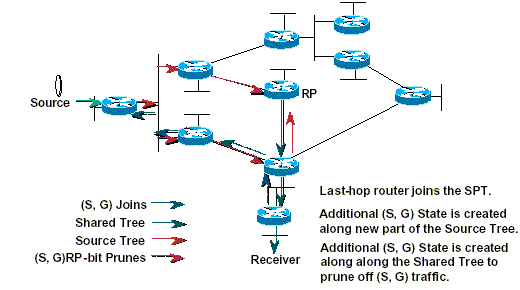
This (S,G) Join message travels hop-by-hop to the first-hop router (the router connected directly to the source) thereby creating another branch of the SPT. This also creates (S,G) state in all the routers along this branch of hte SPT. Finally, special (S,G) RP-bit Prune messages are sent up the Shared Tree to prune off this (S,G) traffic from the Shared Tree. If this were not done, (S,G) traffic would continue flowing down the Shared Tree resulting in duplicate (S,G) packets arriving a t the receiver.
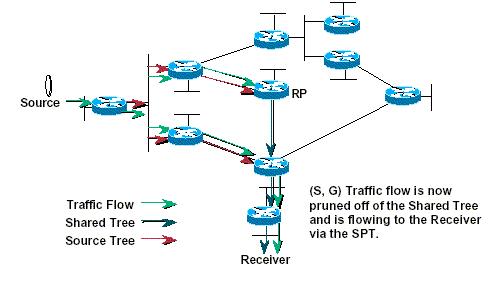
At this point (S,G) traffic is now flowing directly from teh first-hop router to the last-hop router and from there to the receiver. The RP will normally send (S,G) Prunes back towards the source to shutoff the flow of now unnecessary (S,G) traffic to the RP if it has received an (S,G) RP-bit Prune on all interfaces on the Shared Tree. (This is not shown above).
As a result fo this SPT Switchover mechanism, PIM-SM also supports the construction and use of SPT (S,G) trees but in a much more economical fashion than PIM-DM in terms of forwarding state.
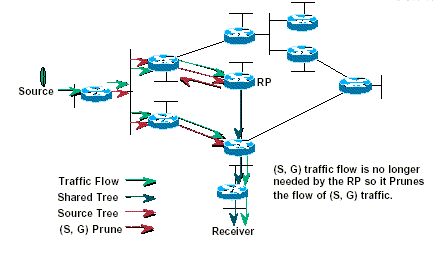
At this point, the RP no longer needs the flow of (S,G) traffic since all branches of the Shared Tree have pruned off the flow of (S,G) traffic. As a result, the RP will send (S,G) Prunes back towards the source to shutoff the flow of the now unnecessary (S,G) traffic to the RP. This will if the RP has received an (S,G) RP-bit Prune on all interfaces on the Shared Tree.
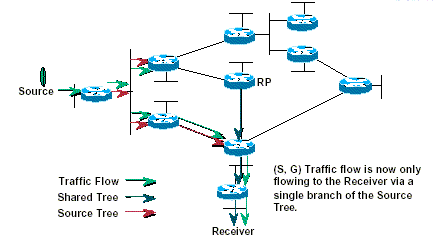
As a result of the SPT Switchover, (S,G) traffic is now only flowing from the first hop router to the last hop router and from there to the receiver - no traffic is flowing from this link to the RP. It is clear that PIM-SM also supports the construction of SPT (S,G) in a much more economical way than that of PIM-DM in terms of forwarding state.
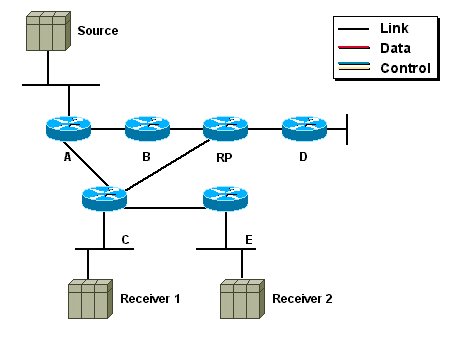
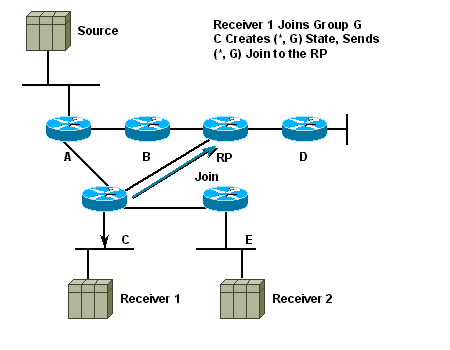
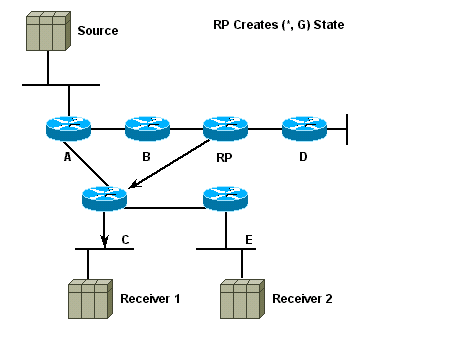
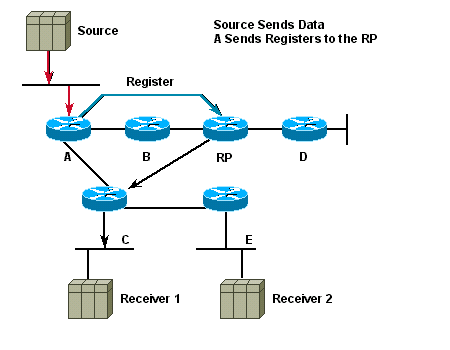
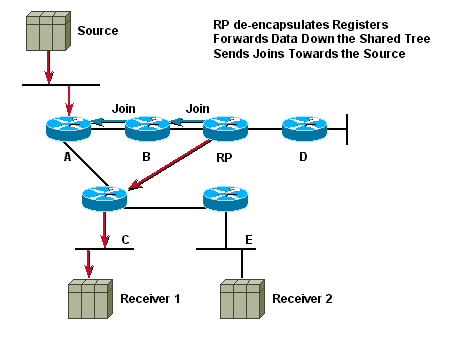
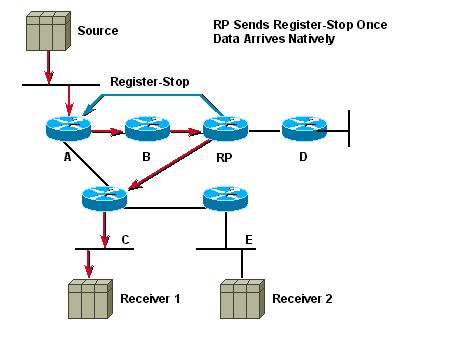
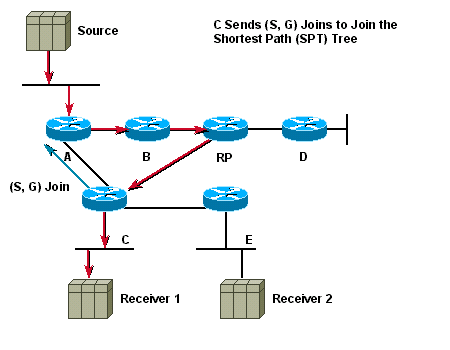
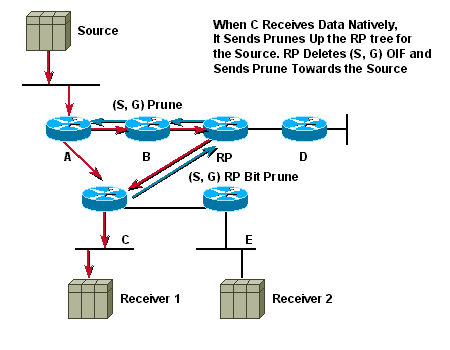
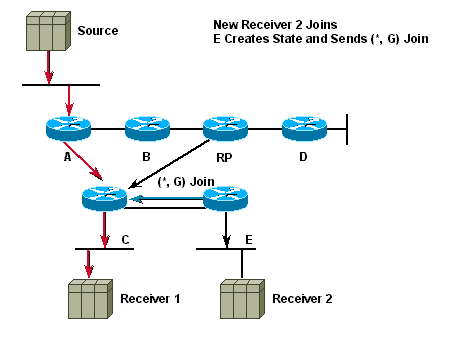
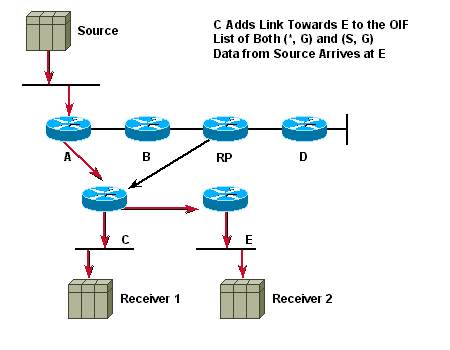
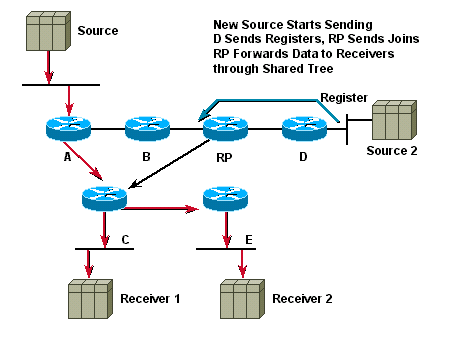
| Wed, 23 July, 2003 13:07 |
Room D14, High Energy Particle Physics, Dept. of Physics & Astronomy, UCL, Gower St, London, WC1E 6BT